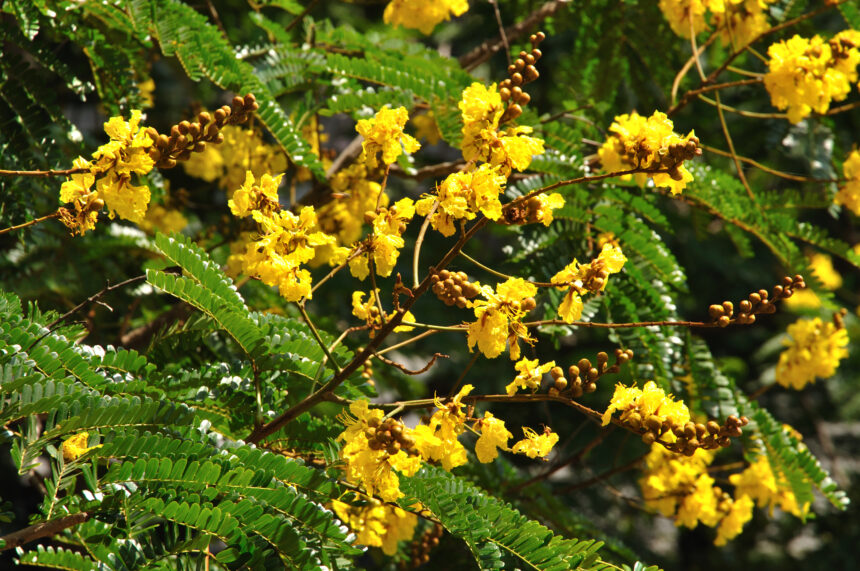Standing upright along the lanes of the K’sirs campus, with dense, spreading crowns, are the semi-evergreen, yellow flame trees. With dark green, feathery, mimosa-like leaflets and a blanket of bright golden-yellow blooms, their umbrella-shaped canopies provide a welcoming shade and a wonderful sight to all K’sirians.
Biologically termed as Peltophorum pterocarpum, it is also commonly known as: yellow flamboyant, and yellow poinciana. They are fast-growing, lowland trees, capable of reaching a height of 35m with a trunk diameter of 1m and a 30 to 50-foot spread.
Their characteristic yellow flowers, which emerge in clusters on long terminal panicles, have orange stamens and crinkled petals with a reddish brown mark in the center. These showy flower clusters exude a delicious, grape-like perfume and are followed by 5-10 cm long and 2.5 cm broad seed pods, which ripen to a brilliant, coppery red.
The yellow flame tree is native to the tropical South-East Asian and Australasian regions. Known as the Soga tree in inland Java in Indonesia, it forms a significant part of the Javanese heritage. This is because Sogan, a natural dye used in their ancestral batik dyeing technique, is derived from this tree.
Getting to know yellow flame’s biological classification:
Kingdom: Plantae
Phylum: Spermatophyta
Sub-Phylum: Angiospermae
Class: Eudicotidae
Sub-Class: Rosids
Order: Fabales
Family: Fabaceae
Subfamily: Caesalpinioideae
Genus: Peltophorum
Species: Peltophorum pterocarpum








